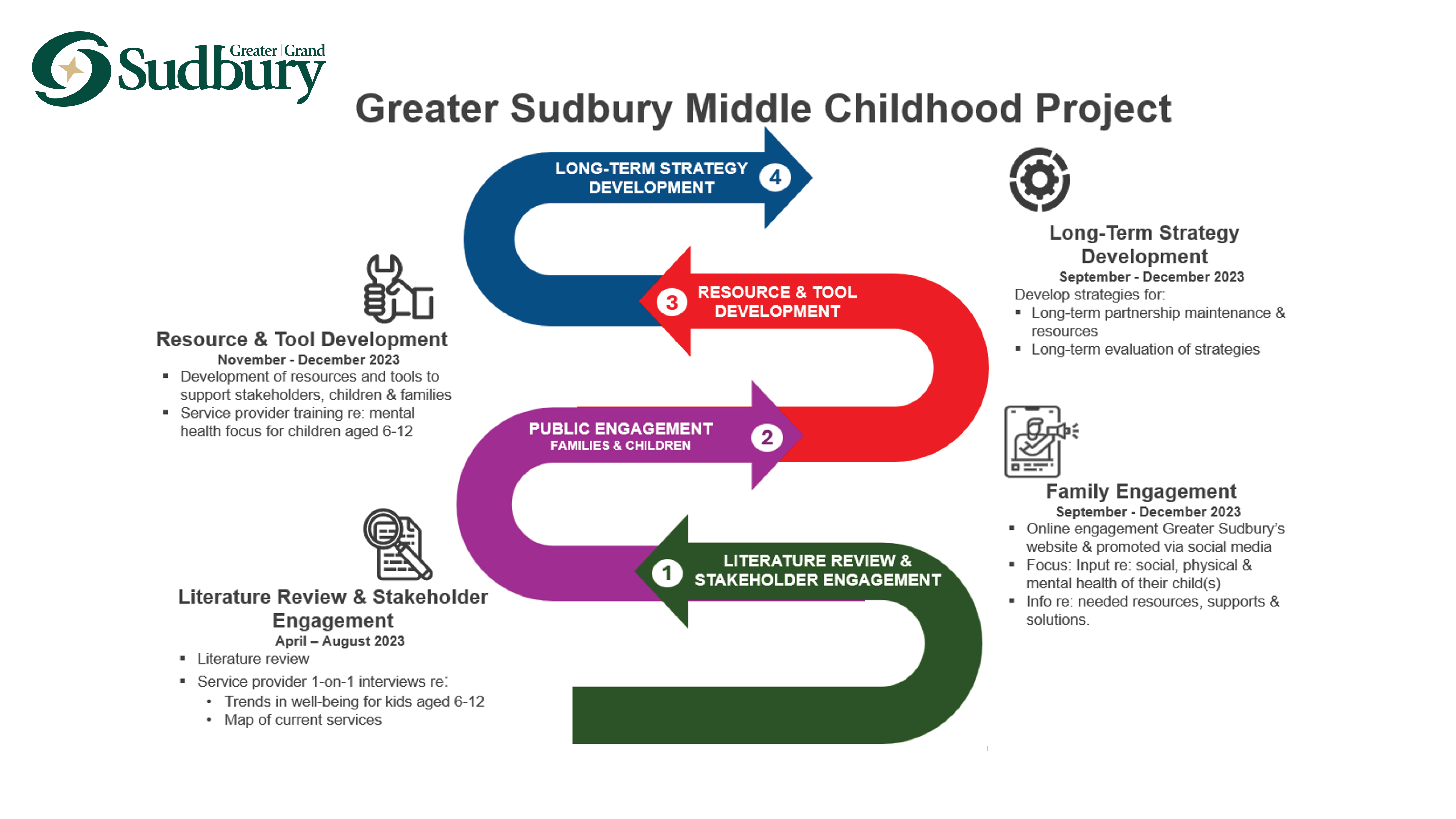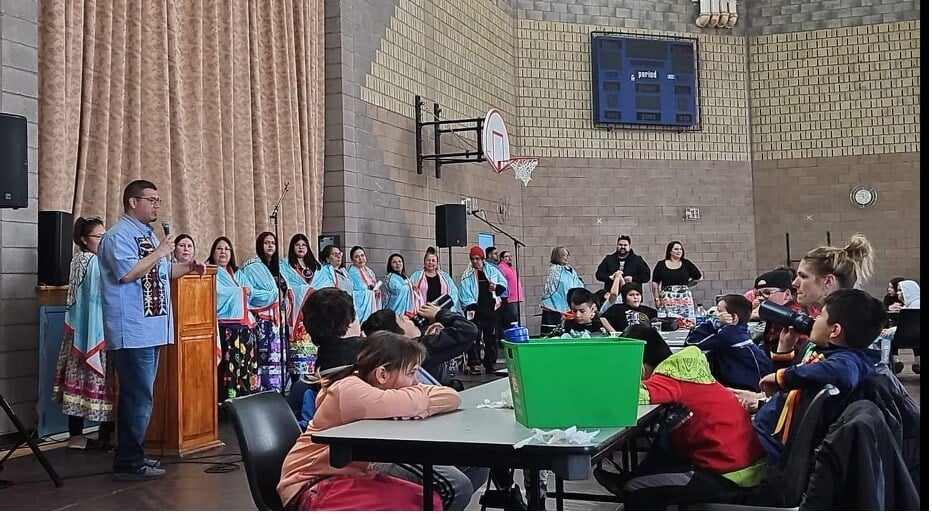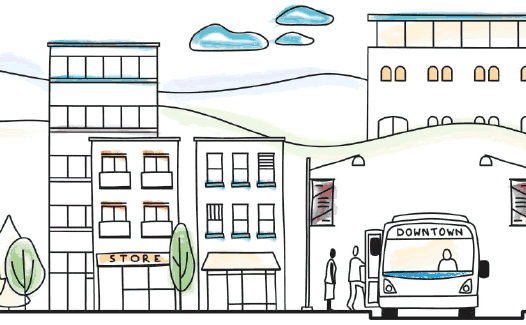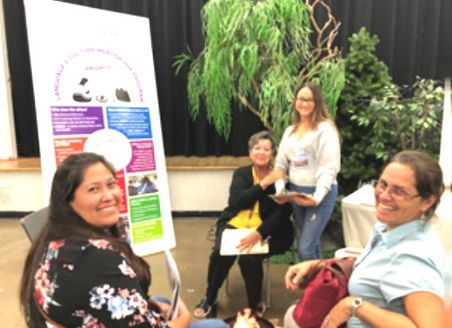The Intersectoral Fund
The Intersectoral Action Fund (ISAF) is a grants program by the Public Health Agency of Canada (PHAC), designed to bolster community capacity for intersectoral action on social determinants of health. The ISAF funds organizations addressing the societal, economic, legal, and political structures and norms that impact individuals and their behaviours. The program aims to enhance population health, reduce health inequities, and strengthen community resilience.
The 2022-23 ISAF funding cohort contained 13 projects. Each ISAF-funded project engaged diverse stakeholders – including community organizations, government agencies, local businesses, and individuals with lived experience – to collaboratively develop a common agenda and an action plan to address a pressing public health issue. This approach enabled the implementation of solutions for a range of complex health priorities while fostering long-term systemic change.
The Collective Impact (CI) Framework – a proven framework for multi-sector collaboration – served as the foundational model for 2022-23 ISAF funded projects. Each project required coordination across various sectors to tackle complex health challenges affecting health equity and well-being. The CI Framework’s five conditions – a common agenda, shared measurement, mutually reinforcing activities, continuous communication, and backbone infrastructure – facilitated the conditions for community action and implementation of meaningful intersectoral action.
Implementing innovative solutions demands creativity and courage. We commend funded projects for sharing their valuable experiences and insights for the benefit of all communities.
Introduction
This case study focuses on the Greater Sudbury Middle Childhood Partnership Project: Building intersectoral partnerships and community strategies to support the health and well-being of children aged 6 to 12 and their families (The Greater Sudbury Middle Childhood Project), led by the City of Greater Sudbury, Ontario, and funded by the Public Health Agency of Canada’s Intersectoral Action Fund. This project aimed to better understand and support the needs of children aged 6-12 and their families as they transition from the well-supported "Early Years" phase to "Middle Childhood." The project recognized that, following the pandemic, the mental health and social and physical development of children in this age group have been impacted and that more comprehensive and coordinated programs and services are needed.
The project engaged diverse partners, including childcare, schools, municipal recreation and leisure groups, and public health, with the shared goal “[of better understanding] the needs of children aged 6-12 and their families, and to develop strategies to coordinate and promote community programming, resources and information for this age group.”
The project had four primary activities (see Figure 1):
- Create a project advisory committee – The Committee included representatives from 13 partner agencies to support overall project planning and action;
- Conduct a literature review & needs assessment – Findings from the literature and input from community partners and parents/guardians identified current challenges and opportunities to strengthen current systems and resources;
- Develop a repository of resources – Accessible to providers and families, this platform provided shared access to relevant resources and a listing of available services (including eligibility, criteria and cost) for children aged 6-12; and
- Offer Learning Opportunities for Staff – Identification of shared learning needs for agencies serving children in their middle years and the hosting of a shared learning event.

Figure 1: Overview of the Sudbury Middle Childhood Project
A central focus of the project was to break down silos between sectors and groups to facilitate the development of shared strategies. Another important focus for the project was to establish an infrastructure to support networking and collaborative planning. Such infrastructure would help to ensure the long-term sustainability of the project and its partnerships.
Insight #1 | 6-12 Year Olds Face Common Issues
The project partners identified that children in the middle years are experiencing an overall decrease in their well-being due to declines in their social, physical, and mental health. Conversations among partners revealed that many have seen similar issues in children in this age group since the pandemic. These included more screen time, less socialization, decreased social skills, and increased social anxiety.
Children in this age group were also experiencing a decline in their physical health and activity levels, a growing lack of interest in physical activity, greater food insecurity, and reduced access to a healthy diet.
We have been dealing with issues in the 6-12 age group that we would normally see with older children since the pandemic.
Childcare provider
The mental health of children in the middle years has also declined since the pandemic. Specifically, there has been an increase in mental health disorders and behaviours, less self-regulation, and various challenges to a healthy family environment. Positive child development depends greatly on strong family relationships, but factors like domestic abuse, parenting stress, and pandemic-related challenges such as isolation can significantly harm children's cognitive, emotional, and social well-being.
Insight #2 | Challenges in Addressing the Needs of 6–12-Year-Olds
Input from agencies and parents of middle-aged children identified barriers and challenges that limited the ability of both groups to respond to the identified needs of children in their middle years.
The challenges for both groups included:
- Agency challenges supporting children in their middle years – Several agency partners spoke of funding constraints for staffing and programs, as well as limitations in existing funding mandates. Waitlists for services, limited physical space, and meeting the needs of both urban and rural areas were also identified as challenges, which limited the delivery of services.
Staffing issues presented challenges for many agencies. These included insufficient staffing levels and staff burnout. A need for specialized training to address behavioural and/or mental health issues was also identified. A lack of information and an absence of quality data were also highlighted. This hindered collaboration and limited system navigation, planning, and evaluation.
- Family challenges accessing service for children in their middle years – Challenges identified by families wanting to access programs and services to support their children aged 6-12 included:
- A lack of awareness of existing programs and services, and/or challenges with system navigation;
- Waitlists and restrictive program eligibility criteria;
- Financial barriers and a lack of subsidized programs;
- A lack of transportation; and
- Language barriers for newcomer families.
A better understanding of the needs and challenges experienced by kids in middle childhood, as well as those faced by parents and agencies, led to the identification of specific priority actions that could be collectively undertaken.
The 6-12 age group is always forgotten... meetings are always geared toward the early years.
Childcare provider
Insight #3 | Opportunities to Strengthen Collaboration
Collaboration was recognized as an effective way to better coordinate efforts to address the needs of children aged 6-12. The Greater Sudbury Middle Childhood Project identified the following three priority areas for collaborative action:
- Better coordination of communication, tools and resources – Communication to parents and guardians can be enhanced and better coordinated through increased use of social media, along with the creation of a shared, user-friendly platform. This platform should include information on available programs and services, such as information about eligibility, cost, and how to access available programs and services.
- Enhanced planning structures and system navigation – The establishment of a sub-committee within the City’s Early Years Planning Network will ensure greater information sharing among partners and facilitate the creation of shared goals to better support children aged 6-12. This should include a specific focus on increasing mental health supports, providing more wrap-around services, and ensuring greater inclusion of children with special needs.
- Shared data collection and use – The implementation of a data strategy between Children’s Services within the City of Greater Sudbury would ensure the regular collection of high-quality qualitative and quantitative data regarding children in middle childhood and their changing needs. This data could inform needs assessments and support system planning. This proposed data strategy should include regular use (every 3 years) of the Early Development Instrument to track changes in the needs of children aged 6-12 over time.
- Collaboration to support staff networking and learning – Agencies identified a desire for better networking and peer learning between sectors to discuss concerns, share successful strategies, and facilitate more wrap-around services between agencies. Such collaboration would also support coordinated action to reduce program waitlists and expand the availability of programs and services. The opportunity to explore joint professional development opportunities to address the diverse learning needs of children would also be possible.
The collaboration that was created to better understand the needs of children aged 6-12 in Greater Sudbury has identified some specific priorities for action, illustrated the overall benefits of coordinated action, and affirmed the willingness of continuing collaboration between agency partners and parents.
Services are often costly; school resources are very limited, and waitlists are long.
Parent of a 6–12-year-old
Project Results & Impact
The work of the Greater Sudbury Middle Childhood Project generated a richer understanding and appreciation of the unique needs of children aged 6-12. The project’s literature review and needs assessment, which included input from both parents and agency partners across a diversity of sectors, found an overall decline in the social, physical and mental health of children 6-12 and their families due to many common issues and the need to better serve this age group. The project highlighted examples of successful collaboration and built consensus on specific priorities, measurable outcomes, and indicators of success to guide continued collaboration among community agencies.
For example, the project established a Middle Years Partnership Committee made up of 13 partner agencies. These partners established Terms of Reference and made a long-term commitment (2024-2029) to continue their collaboration. This Committee will operate as a sub-committee of the established Early Years Planning network, which will help sustain this work in long term. Resources and tools generated to support this work included several guides and templates for establishing Advisory Groups and conducting community surveys. The project also created consent forms and data-sharing agreements between partners.
To begin addressing the immediate need for greater awareness and coordination between existing programs and services, the project developed A Repository of Resources for School-Aged Children. This resource is a platform/webpage for both agencies and parents that profiles community programs and online resources to support the well-being of children aged 6-12, including specific information about program eligibility criteria and cost. The page has supported greater awareness of available programs and services and encourages service alignment and navigation.
Another tangible result of the project is its demonstration of the value of collaboration between community partners. This has deepened interest and commitment among partners to continue networking, engage in peer learning, and collaborate with agency partners. Effective collaboration helped project participants achieve greater alignment of existing services, enhance service navigation, decrease wait times, and increase availability and access to programs and services to improve the well-being of 6-12-year-olds and their families.
Conclusion
The Greater Sudbury Middle Childhood Project has confirmed that children aged 6-12 are experiencing a decline in their overall well-being due to various unmet needs and service barriers. The project also identified common needs and issues experienced by multiple organizations that support children of this age and their families. The project’s collaborative approach has resulted in shared interest across many agencies to commit to long-term collaboration on priorities designed to enhance the region’s responsiveness and effectiveness in supporting children in their middle childhood and their families.
Importantly, this project highlighted the benefits of cross-sector collaboration to effectively address the needs of these young people, their families, and the agencies that serve them.

The Greater Sudbury Middle Childhood Project would like to thank the leadership and staff from partner organizations, as well as the many individuals whose input contributed to the success of this project. We would also like to acknowledge the Public Health Agency of Canada for the funding they provided to make this project possible.










%20(1).jpg)





